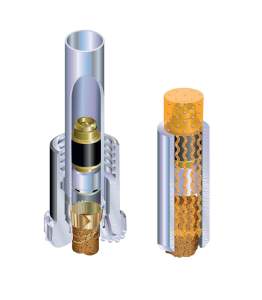Gel Coring
Drilling fluid filtrate invasion during coring can add uncertainty to the interpretation of core analysis results and may preclude fresh-state testing.In particular,in-situ rock wettability can be altered by drilling fluid components and affect critical petrophysical and reservoir engineering parameters-e.g.,residual fluid saturations,Archie saturation exponent “n”,and relative permeability.It is necessary to conduct tests on uninvaded core because major reservoir evaluation issues and reserves estimates can be dependent on core-based data.
Drilling fluid filtrate invasion occurs when the fluid phase of the drilling mud is forced into the formation by differential pressure.The amount of invasion is related to reservoir rock and fluid properties,drilling parameters (especially ROP),and the drilling fluid filtration characteristics.
The Gel coring system provides a layer of lubricating fluid between the core and inner tube to prevent jamming. It is ideal for fractured, broken formation as well as soft,sticky clay that tends to swell and jam as it moves up the inner tube. The Gel coring system can be used with our Standard Core Barrel.Set up time is similar to conventional coring.
To protect cores from drilling fluid invasion, which can alter the chemical and physical properties of the cores, the Gel coring system uses a viscous, noninvasive gel. The gel fully encapsulates the core downhole to prevent contact with the drilling fluid and supports the core during recovery, surface handling, and transportation.

